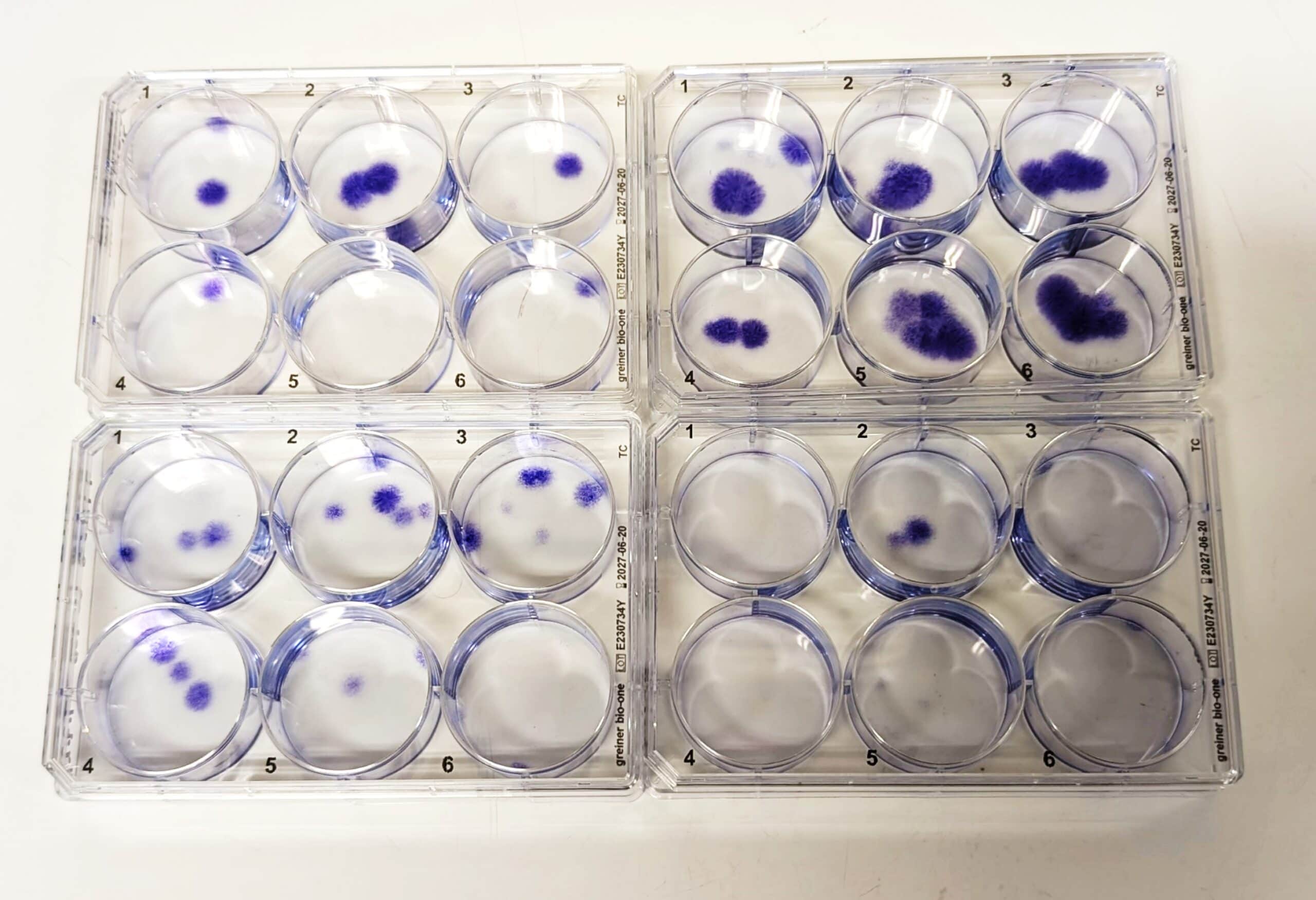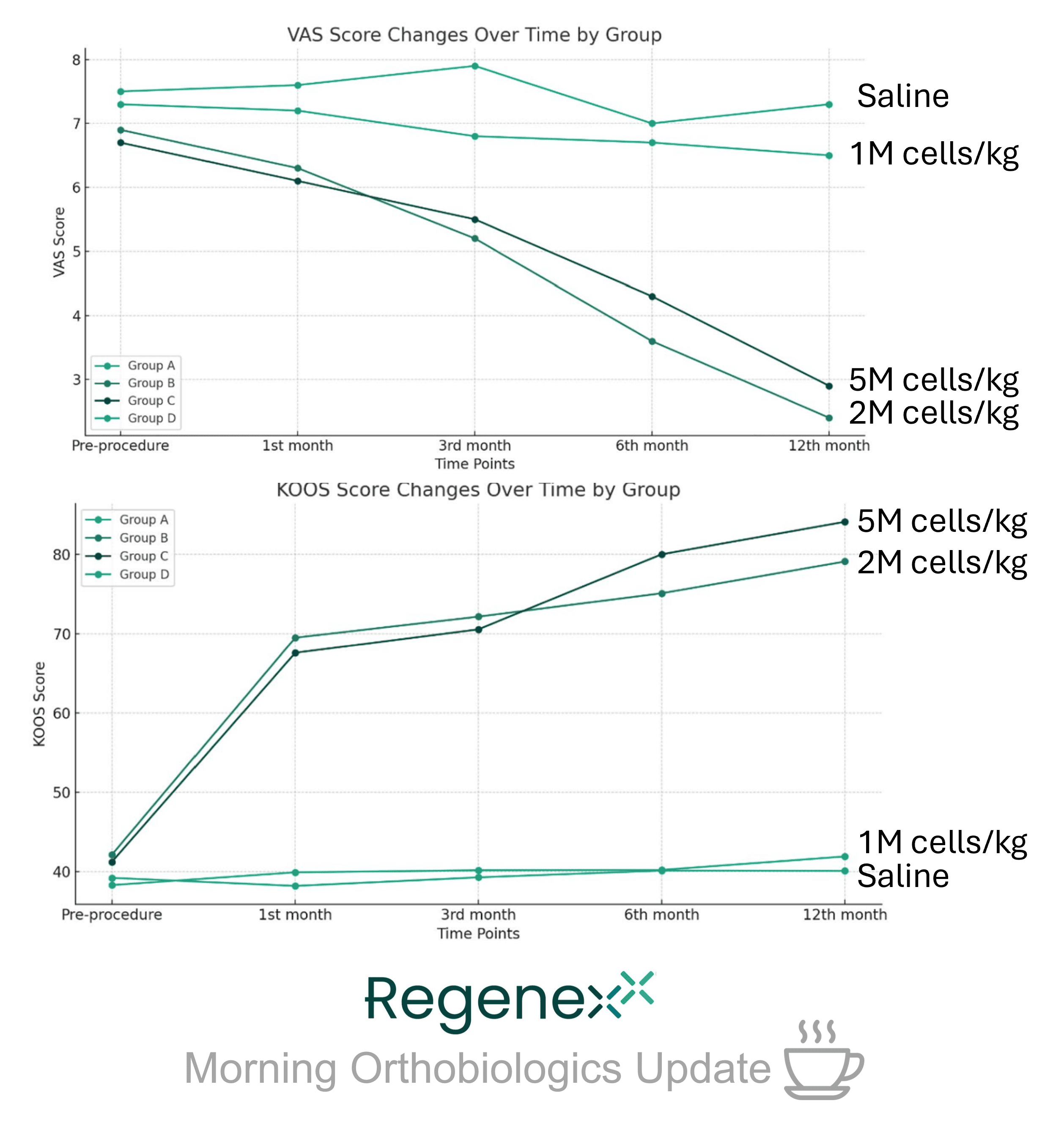Research Updates on the Bedside Dosing of Bone Marrow Concentrate

Now that dosing PRP has become a good thing, the next domino to fall for dosing is bone marrow concentrate. Up until this past month, outside of our 2014 paper, there wasn’t much out there about a simple bedside method to get to the right dose. Now, with several new papers being published, has that changed?
Orthobiologics and Dose
Dosing is ignored in no other area of medicine because the dose is often critical for treatment success. However, in orthobiologics, 99% of the clinics you could go to have no idea of the dose of PRP or BMC that they’re injecting. That’s NEVER been the case at Regenexx, where dose has been a thing since we began in 2005. These past few years, advanced orthobiologics practices have begun to pay attention to PRP dose. That’s wonderful, and we welcome the company, but regrettably, even for PRP, the likelihood of finding that type of clinic is still like finding a needle in a haystack.
Bone Marrow Concentrate Dosing
Several studies correlate the stem cell content of bone marrow concentrate with clinical outcomes (1-3). The higher the stem cell content, the better the outcomes. The problem is that there are only two surefire ways to measure stem cell content; neither of these is something a doctor’s office can do.
The two ways to measure the stem cell content of BMC are CFU-f counts and CD-271 flow cytometry counts.
CFU-f

CFU-f stands for Colony Forming Unit-fibroblast assay, which is shown above in plates I grabbed from our research lab. The purple colonies each represent a stem cell in the diluted BMC that was plated. Hence, this provides a rough count of the mesenchymal stem cell content. However, there are a few caveats with CFU-f counts:
- They require 10-14 days of culture, so they can’t be used to dose cells at the bedside.
- The counts can vary widely between different labs and plating techniques, so they can’t be compared between labs and are only validated within one lab to check counts between samples.
CD-271

Above, you see a rare event flow cytometer with acoustic focusing. Again, I just went into our research lab and snapped this pic. While this scientific instrument can measure many different markers on the surface of cells, the CD271 marker has become the default for counting mesenchymal stem cells (4). This is not your average flow cytometer, as it was designed to detect rare events like MSCs. While it could theoretically be used to get a stem cell count on the same day as a procedure, it takes a highly trained tech or PhD to interpret the results, as complex gating is required to ID these rare hits. Hence, again, this is NOT practical for measuring stem cell counts in BMC at the bedside in the average orthobiologics clinic.
BMC Counts at the Bedside-TNCC
Can we do a count at the bedside to get an idea of how many stem cells are probably in a sample? Yes, we can count Total Nucleated Cells, which is a rough estimate of the number of stem cells. We introduced this concept in a 2014 study where the decrease in knee pain was associated with >400 million TNCC delivered into the knee (7). However, nobody else has used this simple metric until a spate of recently published new studies.
The New Research
The new papers are from studies that included only moderate knee osteoarthritis (KL 2-3) (5,6). These graphs are from my Regenexx Morning Orthobiologics Update on Linkedin.

In the first study, they dosed the BMC by the patient’s weight, giving 1 million cells per Kg in one group, 2 million cells per Kg in a second group, and 5 million cells per Kg in a third group. Above is what they found. Basically, the 2 and 5 million cells per Kg doses worked the best, while 1 million cells per Kg was too low a dose.

In the second study (graph above), the doctors used 10M, 50M, and 100M cells, and they saw good results in pain and imaging findings in the medium and high-dose cell groups (50M and 100M cells). Again, the second study documented improvements in imaging, which is pretty cool.

Above is how the two studies stack up total TNCC doses in the average man and woman. The first study would have even higher doses for overweight people, and those are shown below:

So, a great question would be, were there overweight patients in these studies? Muthu’s mean BMI was 25, just on the high side of normal weight/mildly obese. For Jeyarman, the BMI was higher at around 27, which is mildly obese. So, many of the Jeyerman patients were given doses above the normal weight ranges I listed above, about 150M to 375 million.
What We Know Now About TNCC, BMC, and Knee OA
So, how do all of these studies line up? If you had to come up with a TNCC dose, on the low side would be the Muthu study at 50M cells, and on the high side would be the Centeno study at 400M cells. Jeyerman would be in the middle at 100-250M cells for most patients (more similar to Centeno if the patient is overweight). In our study, we also had some KL4 knees (severe OA), and our average BMI was 27, similar to Jeyerman. In addition, our patients and those in Jeyerman were older, in their mid-50s, as opposed to Muthu where patients were in their late 40s. Finally, both new studies were done in India and ours in the US, so I am unsure if that has an impact. In addition, both Indian studies included a population of patients with type 2 DM, whereas our study had very few of these patients.
Final Dosing Recommendations
Can we draw any conclusions from these three studies focusing on TNCC dosing? Here is my take:
- For younger, non-obese patients with moderate knee OA, based on these studies, 100-200M cells in a knee would be a reasonable target.
- For older, heavier patients with more severe knee OA-400M cells would be a good target.
The upshot? Seeing these two new authors building on our 2014 work and taking it a few steps forward is wonderful. We are also working on a new paper that will look more closely at TNCC vs. CFU-f relationships to see if dialing in this type of dosing might be possible.
_________________________________________________
References:
(1) Centeno CJ, Berger DR, Money BT, Dodson E, Urbanek CW, Steinmetz NJ. Percutaneous autologous bone marrow concentrate for knee osteoarthritis: patient-reported outcomes and progenitor cell content. Int Orthop. 2022 Aug 6. doi: 10.1007/s00264-022-05524-9. Epub ahead of print. PMID: 35932306.
(2) Pettine KA, Murphy MB, Suzuki RK, Sand TT. Percutaneous injection of autologous bone marrow concentrate cells significantly reduces lumbar discogenic pain through 12 months. Stem Cells. 2015 Jan;33(1):146-56. doi: 10.1002/stem.1845. PMID: 25187512.
(3) Hernigou P, Beaujean F. Treatment of osteonecrosis with autologous bone marrow grafting. Clin Orthop Relat Res. 2002 Dec;(405):14-23. doi: 10.1097/00003086-200212000-00003. PMID: 12461352.
(4) Álvarez-Viejo M, Menéndez-Menéndez Y, Otero-Hernández J. CD271 as a marker to identify mesenchymal stem cells from diverse sources before culture. World J Stem Cells. 2015 Mar 26;7(2):470-6. doi: 10.4252/wjsc.v7.i2.470. PMID: 25815130; PMCID: PMC4369502.
(5) Muthu S, Ramanathan K, Alagar Yadav S, Jha SK, Ranjan R. Increased Cellular Dosage of Bone Marrow Aspiration Concentrate Does Not Translate to Increased Clinical Effectiveness in Knee Osteoarthritis: A Phase I Dose Escalation Study. Indian J Orthop. 2024 Jun 5;58(8):1001-1008. doi: 10.1007/s43465-024-01197-1. PMID: 39087042; PMCID: PMC11286881.
(6) Jeyaraman M, Karthik KS, Choudary D, Jeyaraman N, Nallakumarasamy A, Ramasubramian S. Autologous Bone Marrow Aspiration Concentrate (BMAC) Therapy for Primary Knee Osteoarthritis-An Observational and Dose Escalation Study. Indian J Orthop. 2024 Jun 7;58(8):1016-1026. doi: 10.1007/s43465-024-01194-4. PMID: 39087054; PMCID: PMC11286920.
(7) Centeno CJ, Al-Sayegh H, Bashir J, Goodyear S, Freeman MD. A dose response analysis of a specific bone marrow concentrate treatment protocol for knee osteoarthritis. BMC Musculoskelet Disord. 2015 Sep 18;16:258. doi: 10.1186/s12891-015-0714-z. PMID: 26385099; PMCID: PMC4575428.

NOTE: This blog post provides general information to help the reader better understand regenerative medicine, musculoskeletal health, and related subjects. All content provided in this blog, website, or any linked materials, including text, graphics, images, patient profiles, outcomes, and information, are not intended and should not be considered or used as a substitute for medical advice, diagnosis, or treatment. Please always consult with a professional and certified healthcare provider to discuss if a treatment is right for you.
